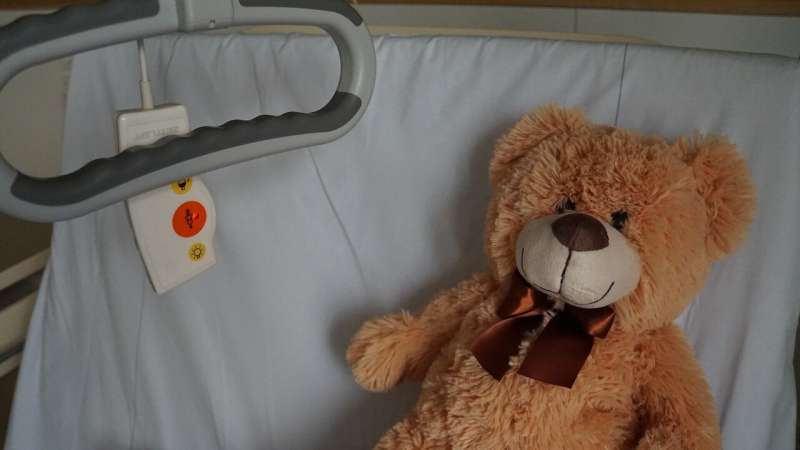
Forty percent of critically ill children whose parents or other caregivers declined tracheostomies died within 24 months, and half of all deaths occurred within six weeks, researchers at UT Southwestern Medical Center and Children’s Medical Center Dallas found.
The findings, published in The Laryngoscope, could help physicians counsel parents who must decide whether their child will receive a tracheostomy, a decision with significant emotional, social, and economic impacts for families, the authors say.
“The decision to place a tracheostomy in a child is a very difficult task for most families who face it. This study doesn’t dictate which children should or should not receive a tracheostomy, but will help families contemplating what might happen if they decide to withhold placement,” said study leader Stephen R. Chorney, M.D., M.P.H., Assistant Professor of Otolaryngology—Head and Neck Surgery at UT Southwestern.
A tracheostomy, also known as a tracheotomy, inserts a breathing tube into the trachea through an opening surgically created in the neck. Situations that can call for a tracheostomy include respiratory failure, airway obstruction, and severe neurological injury, Dr. Chorney said.
Having a tracheostomy is a life-changing event for children and their families, he said. Routine errands such as going to the grocery store become far more complicated, necessitating a bevy of equipment and planning. Caring for tracheostomies can be emotionally exhausting and financially draining, Dr. Chorney added, often requiring caregivers to rethink their ability to work full-time or continue living in the same place if it’s not conducive to their child’s care. Healthy children in these families often must accept a shortage of attention and resources devoted to siblings with tracheostomies.
Most caregivers agree to their child receiving a tracheostomy, but others decline, saying it doesn’t align with their family or religious values, capacity for care, or goals for their child or family. Although significant research exists on outcomes for children who receive tracheostomies, no studies have previously explored outcomes for those whose caregivers decline, Dr. Chorney said—which limits physicians’ ability to provide adequate counseling to caregivers.
To fill this gap, Dr. Chorney and his colleagues reviewed medical records of 261 children offered a tracheostomy between 2016 and 2021 at Children’s Medical Center Dallas. There, the Children’s Health Pediatric Airway Management Program—a multidisciplinary team of providers dedicated to caring for children with tracheostomies—provides counseling for caregivers whose children are eligible for them. These records showed that 203 caregivers agreed to a tracheostomy after counseling and 58 caregivers declined.
Of the children whose caregivers declined placement, 52% had died by their latest follow-up compared to 21% of the children who received a tracheostomy. The mean time to death was 11 months when a tracheostomy was not placed but was more than 28 months when placed. About 31% of children not obtaining a tracheostomy died within a mean of 1.2 months after this difficult decision, never leaving the hospital.
Factors associated with declining a tracheostomy included the child being older, having congenital malformations, and having a history of sepsis, which is a life-threatening response to infection. Factors linked to dying after declining tracheostomy included being younger, having a history of sepsis, being intubated at the time of consultation, and needing the tracheostomy for a condition other than chronic lung disease.
Dr. Chorney noted that although tracheostomies can significantly extend survival, they don’t always improve quality of life. He and his colleagues plan to study quality of life both for families choosing for their children to receive tracheostomies and those declining them.
When tracheostomies are no longer needed, they can be removed to allow the neck to heal or be surgically closed. However, for some patients they are permanent, which highlights the magnitude of these decisions for caregivers before placement.
More information:
Palmila Liu et al, Survival After Declining Pediatric Tracheostomy Placement, The Laryngoscope (2023). DOI: 10.1002/lary.30712
Journal information:
Laryngoscope
Source: Read Full Article
